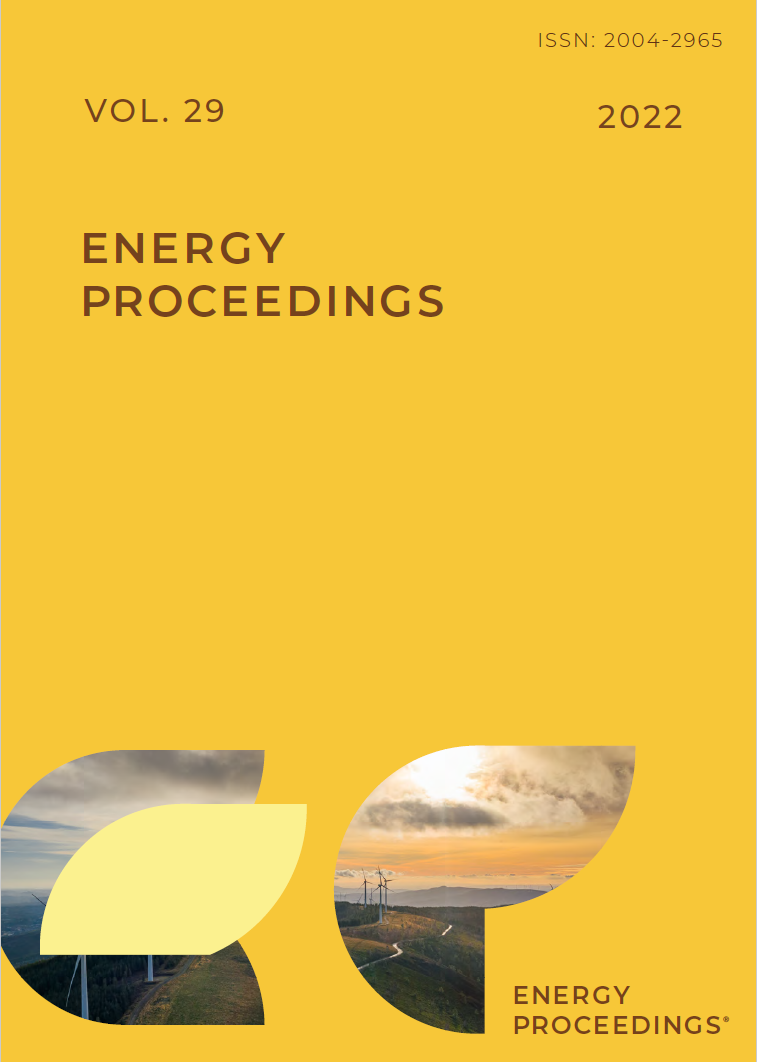
Volume 29: Closing Carbon Cycles – A Transformation Process Involving Technology, Economy, and Society: Part IV
ISSN 2004-2965
Experimental and modeling study of the methane gas hydrate formation using ZnO nanoparticles
Bhavikkumar Mahant, Omkar Singh Kushwaha, Rajnish Kumar
Download PDF
Article Preview
Experimental Investigations on the Adsorptive Behavior of H2O Vapor on HTC Char Particles
Tim Eisenbach, Horacio A. Duarte, Carsten Wedler, Christin Pflieger, Martin Muhler, Roland Span
Download PDF
Article Preview
Integration of a novel renewable energy-fired CCHP integrated with an indirect solar-driven biogas reforming unit at high water steam condition
Shenghua Huang, Bosheng Su, Zhilong Xu, Yilin Wang
Download PDF
Article Preview
A Hybrid Solar Chimney Power Plant for Electricity Generation: Al Ain Case Study
Jad Sunna’, Emad Abdelsalam, Hamza Nawafah , Malek Alkasrawi , Ali Muheidat
Download PDF
Article Preview
Local currencies in the context of climate protection – A circular and decentral economy approach based on real experiments
Christian Gelleri
Download PDF
Article Preview
Effect of Deposit Heat Transfer on Natural Gas Hydrate Exploitation by Depressurization
Shuang Dong, Jia-nan Zheng, Mingjun Yang, Yongchen Song
Download PDF
Article Preview
Effect of Cathode Composition and Pt loading on the Performance of PEMFCs
Asal Saeidfar, Serhat Yesilyurt
Download PDF
Article Preview
CH4 Hydrate Formation on the Surface of a Gas Bubble in Simulated Deep Water Environment with Different Depth
Zhenwu Zhou, Jingchun Feng , Yan Xie, Yanyan Huang, Junwen Wang, Pian Li, Liwei, Sun
Download PDF
Article Preview
Insights into mechanism of wettability alteration caused by CO2-brine-rock interactions from interfacial features of brine-rock viainter molecular forces
Zejiang Jia, Zhengfu Ning, Zhipeng Wang
Download PDF
Article Preview
Li2CO3-doped Dark Calcium Carbonate Pellets for Direct Solar Energy Capture and Fast Heat Storage
Changjian Yuan, Xianglei Liu
Download PDF
Article Preview

Copyright ©
Energy Proceedings

